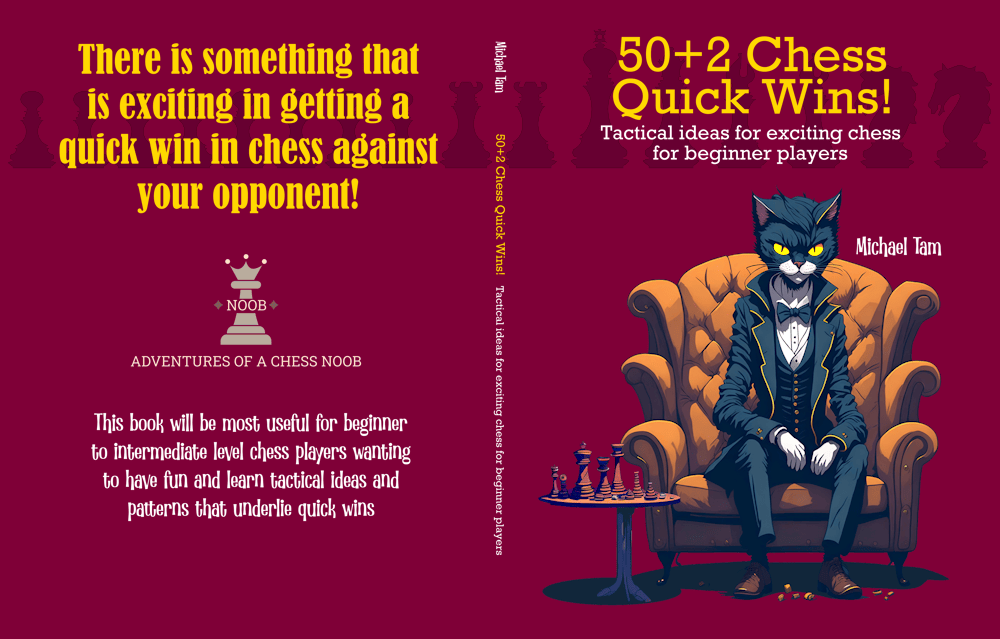
HUNTING for TACTICS | Converting a successful Englund Gambit!
#englundgambit #tactics #beginnertips
One of the things that I’ve learned in my chess journey (and I’m still a noob!) is that searching for and playing chess tactics, increases the likelihood of a win. What do I mean? Consciously, and deliberately, finding and creating pins, forks, discoveries, batteries, and more! The logic is that each tactic creates a complication for the opponent to have to navigate. Even if it can’t be used immediately, it adds to a bank of tactical “resources” for a winning attack!
The following was a neat little 10+5 game of rapid that I played on Lichess that demonstrates this approach well! I had the black pieces, and my opponent led with the Queen’s Pawn Opening, I played the Englund Gambit, and White responded by Accepting the gambit. As typical, we enter the Englund Complex position (1. d4 e5 2. dxe5 Nc6 3. Bf4 Qe7 4. Nf3 Qb4+).
The “killer queen” is a triple absolute fork – an attack on the king (so a check), but also on the undefended f4-bishop and b2-pawn. The Englund Complex line is forcing for White, as they have only a single good line. In the position, they must play a backwards bishop move with (5. Bd2). White will often find the move (it’s not hard to find), but it is surprising how often White, even at the intermediate level, will make a definitive blunder at this turn! According to the Lichess community database, White hang’s their dark square bishop on the f4 square around one-third of the time! 😲
This occurred in this game with White blocking check with their knight and thus losing their bishop on turn 5 (5. Nbd2 Qxf4)!
Out of theory now, I made a deliberate attempt to find some sort of tactic with almost every subsequent move to convert the advantage to a win! Have a look at the PGN below, but to list things out for the sake of clarity:
- 6… Qb4 – pin the d2-knight to the king
- 7… d6 – open the diagonal for the light square bishop, and bait White to liquidate their forward e5-pawn, which assists with Black’s development further
- 8… Bxd6 – positions the dark square bishop to pressure white’s h2-pawn/h-file. As White will most likely castle kingside, this lines up the bishop for a future attack on White’s king.
- 9… Ne5 – fork of White’s bishop and knight, and bait White to trade away one of their pieces, simplifying the game towards an advantageous endgame
- 10… Bxe5 – and the recapture with the dark square bishop on the long dark square diagonal, pressures White’s a1-rook, and wins tempo
- 12… Bg4 – the coordination of the bishop pair and knight traps White’s queen!
- 13… Nxg4 – with the capture of White’s queen, the knight now joins the e5-bishop on an attack on White’s h2-pawn, which is only defended once!
- 14… O-O-O – opposite side castling moves the king to safety, and allows a potential pawn storm on the kingside, and relatively pins White’s d2-knight to their rook on d1
- 15… Rxd1 – trade rooks to simplify, moving the game towards an advantageous endgame
- 16… Rd8 – inviting White to trade the second pair of rooks
- 17… Qd6 – battery with the e5-bishop on the dark square diagonal looking at h2!
The chess.com analytic engine rated this game at 91.0 accuracy for me, which I’m pretty pleased about! I don’t play the best or most accurate move each turn, but I think that each move served a tactical purpose!



